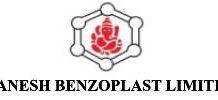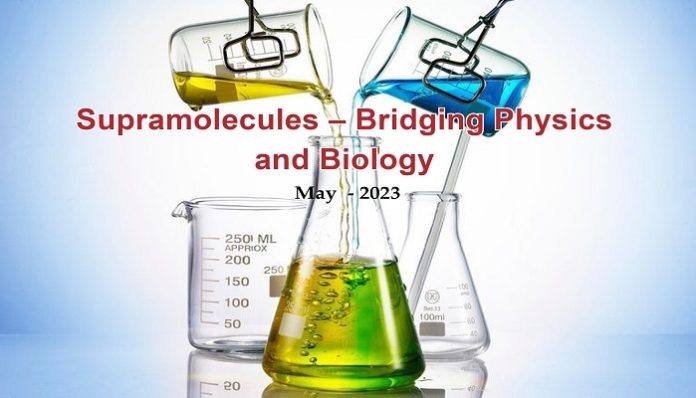Supramolecular chemistry is a field where non-covalent interactions between molecules are harnessed to construct fascinating chemical architectures with unique properties. Supramolecular chemistry holds immense promise in fields like materials science, drug delivery, and nanotechnology, driving innovation and opening new avenues for scientific exploration.
On a fateful day in 1967, in a laboratory in Strasbourg, France, Jean-Marie Lehn observed a peculiar phenomenon. Two seemingly unrelated molecules unexpectedly entwined forming a mesmerising structure that defied conventional expectations. Driven by an insatiable curiosity, Jean-Marie embarked on an audacious journey, eager to unravel the hidden secrets of molecular recognition. He meticulously designed and synthesised unique molecules that possessed the ability to recognise and selectively bind to specific partners, much like a key fitting perfectly with its lock. His research led him to define a new field within chemistry which he called “supramolecular chemistry”. This field is concerned with the complex entities formed by the association of two or more chemical species linked to one another through non-covalent intermolecular interactions. Jean-Marie Lehn was awarded the Nobel Prize in Chemistry in 1987.
Bridging Physics and Biology
Supramolecular chemistry can be considered as a bridge between physics and biology. It explores the interactions and self-assembly of molecules and molecular systems, focusing on the non-covalent forces that govern their behaviour. By studying these non-covalent interactions, supramolecular chemists gain insights into fundamental physical principles and apply them to biological systems. Supramolecular chemistry provides a framework for understanding the physical principles underlying biological phenomena and offers tools to manipulate and control these processes. It enables the design and synthesis of molecules and materials that mimic or interact with biological systems, leading to applications in drug delivery, biomaterials and molecular sensors.
Non-covalent
There are several salient features that often occur simultaneously or independently within a supramolecular assembly. Supramolecular systems rely on non-covalent interactions, such as hydrogen bonding, electrostatic interactions, van der Waals forces, hydrophobic interactions, and π-π stacking. These weak interactions are reversible and allow for dynamic and adaptable structures. Supramolecular systems often involve molecular recognition, where specific interactions occur between complementary sites on different molecules. This recognition can be highly selective and result in the formation of well-defined assemblies.
Self-assembly
Supramolecular systems have the ability to self-assemble, meaning that the individual components can spontaneously come together to form larger structures. This process is often driven by the favourable interactions between the components and the resulting thermodynamic stability of the assembled structure. Supramolecular systems can exhibit hierarchical organisation, where multiple levels of assembly occur. For example, small molecules may first assemble into discrete supramolecular building blocks, which then further assemble into larger superstructures. Supramolecular systems exist in a dynamic equilibrium, constantly interchanging between different structures and conformations. This dynamic nature allows for adaptability, responsiveness, and the ability to undergo stimuli-induced changes.
Emergent Properties
Supramolecular systems often display emergent properties, meaning that the collective behaviour of the assembled structures is different from the properties of the individual components. These emergent properties can include enhanced stability, unique optical or electronic properties, or specific functionalities. Supramolecular systems can exhibit a wide range of structural diversity, ranging from discrete complexes and cages to extended networks and crystals. This diversity arises from the ability of different components to assemble in various ways based on their chemical structure and interactions.
Material Science
Supramolecular chemistry finds applications in various fields, including materials science, drug delivery, sensing, catalysis, and nanotechnology. In materials science, supramolecular interactions are harnessed to design and construct functional materials with tailored properties. For example, self-assembled monolayers on surfaces can be used to modify the properties of materials, such as their wettability or electronic conductivity. Supramolecular chemistry also explores the concept of stimuli-responsive materials, which can undergo reversible changes in response to external stimuli such as light, temperature, pH, or electric fields. These materials, often referred to as smart or intelligent materials, have applications in drug delivery, tissue engineering, and sensors. For example, supramolecular hydrogels can change their properties in response to environmental cues, enabling controlled release of drugs or facilitating tissue regeneration.
Medicine
The design and synthesis of supramolecular systems often involve the use of molecular recognition, which refers to the specific interactions between complementary molecules. Host-guest chemistry is a prominent example of molecular recognition, where a host molecule selectively binds to a guest molecule through non-covalent interactions. This recognition can be based on the shape, size, charge, or other complementary properties of the molecules involved. In drug delivery, supramolecular systems offer promising solutions for targeted and controlled release of therapeutics. By designing host molecules that can selectively bind to specific guest molecules, drug molecules can be encapsulated and protected, allowing for controlled release at the desired site. This approach can improve drug efficacy, reduce side effects, and enhance patient compliance.
Sensors and diagnostics
Supramolecular chemistry also plays a crucial role in the development of sensors and diagnostics. By exploiting the specific interactions between target molecules and sensing elements, supramolecular sensors can be designed to detect analytes with high sensitivity and selectivity. These sensors find applications in environmental monitoring, food safety, and medical diagnostics, among others.
Catalysis
Catalysis is another area where supramolecular chemistry has made significant contributions. Supramolecular catalysts can accelerate chemical reactions by providing a favourable environment for the reaction to occur. By incorporating catalytically active sites within larger supramolecular structures, researchers can design catalysts with enhanced activity, selectivity, and recyclability. Nanotechnology is another field greatly influenced by supramolecular chemistry. Supramolecular self-assembly can be utilised to create nanoscale structures and devices with precise control over their size, shape, and function. These structures, known as supramolecular nanoparticles, have applications in drug delivery, imaging, energy conversion, and molecular electronics.
Challenges
Designing supramolecular systems with specific properties and functionalities can be challenging. The ability to predict the behaviour and properties of supramolecular assemblies based on their structural motifs is still limited. The lack of reliable computational tools for accurate predictions hampers the design process. The synthesis of supramolecular structures often involves multiple synthetic steps and the precise control of non-covalent interactions. Achieving high yields and selectivity while maintaining structural integrity can be difficult. Additionally, the synthesis of complex supramolecular architectures requires sophisticated techniques and building blocks. The dynamic nature of supramolecular assemblies poses challenges in terms of stability, reproducibility, and the development of robust functional materials. The non-covalent and/or reversible processes ubiquitous in the field can be difficult to control, mainly due to their sensitivity to environmental conditions. Characterising supramolecular assemblies can be challenging due to their transient and dynamic nature. Traditional characterisation techniques often fall short in providing detailed information about their structure, properties, and interactions. The development of advanced characterisation techniques capable of probing supramolecular systems in situ and at the nanoscale is essential.
Epilogue
Supramolecular chemistry is a dynamic and interdisciplinary field that investigates the interactions between molecules and the formation of complex, functional structures. By understanding and manipulating non-covalent interactions, scientists can design and construct supramolecular systems with tailored properties and applications in diverse areas. This field continues to expand and inspire new discoveries, paving the way for exciting advancements in materials science, medicine, and nanotechnology.
Readers’ responses may be sent to:
k.sahasranaman@gmail.com or
chemindigest@gmail.com
































